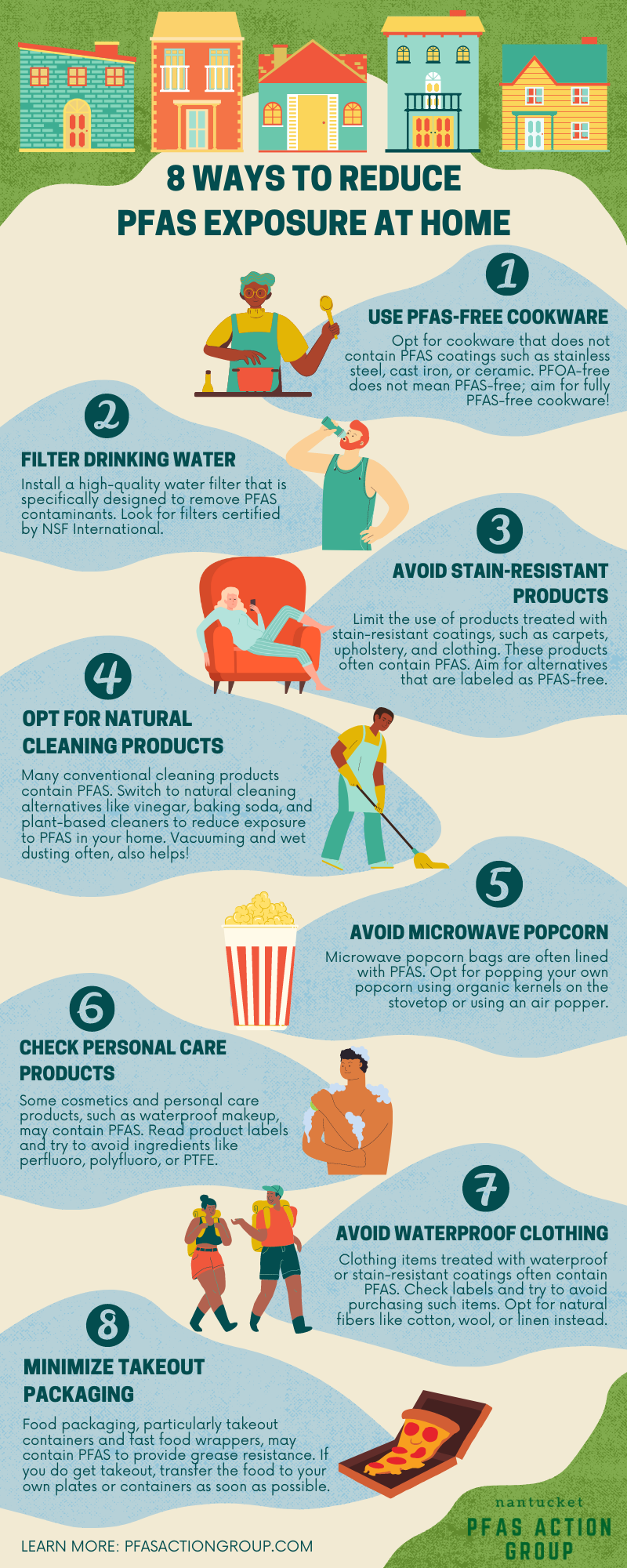
PFAS 101 and Local Impact
What are PFAS?
Per- and polyfluoroalkyl substances, or PFAS, are a group of thousands of man-made chemicals used to keep everyday products water-, grease-, and stain-resistant. They’re found in things like nonstick pans, food packaging, carpets, and outdoor gear.
But there’s a problem: PFAS are often called “forever chemicals” because they don’t easily break down. They can accumulate in the environment and in our bodies, and some types have been linked to significant health risks.
The CDC (Centers for Disease Control) and ATSDR (Agency for Toxic Substances and Disease Registry) note that:
PFAS don’t occur naturally, but are now found almost everywhere.
They’ve been detected in people, wildlife, and fish around the world.
Some PFAS can stay in the body for years.
Many PFAS don’t break down in the environment, making them tough to clean up.
How am I exposed to PFAS?
Exposure happens when a person breathes, eats, drinks, or touches a chemical, and it enters their body. Exposure can occur from:
Living near sites with contaminated air, soil, or drinking water.
Eating food grown or raised near places that used or made PFAS.
Eating fish or wild game contaminated by PFAS (notably PFOS).
Accidentally swallowing contaminated soil or dust.
Eating food packaged in material that contains PFAS.
Using products like stain-resistant carpet or water-repellent clothes.
Inhaling PFAS (manufacturing chemicals or using fire-fighting foam).
For most PFAS, showering and bathing in water containing PFAS should not significantly increase exposure.
Babies born to mothers who were exposed to PFAS can also be exposed:
Before they are born
While breastfeeding
Drinking formula mixed with PFAS-contaminated water.
Source: ATSDR/CDC
>> For a list of PFAS-free products, click here.
Can PFAS cause health problems?
Scientists and public health agencies have found that exposure to certain PFAS chemicals may lead to:
Immune system effects
Reduced vaccine response
Higher risk of infections
Sources: CDC/ATSDR PFAS Health Effects, National Academies of Sciences, 2022 Report
Cholesterol and liver impacts
Elevated cholesterol levels
Changes in liver function
Sources: EPA PFAS Health Effects, CDC/ATSDR
Reproductive and developmental effects
Reduced fertility
Hormone disruptions
Lower birth weights
Potential impacts on learning and behavior in children
Sources: CDC/ATSDR, EPA, National Toxicology Program
Cancer risks
Increased risk of kidney cancer
Increased risk of testicular cancer
Sources: IARC Monographs on PFAS, EPA
Thyroid effects
⚠️ Note: Not all PFAS have been studied, but because they remain in the body and environment for years, health experts treat them as a serious concern.
How do I test my blood or water for PFAS?
If you find out your water, soil or air is contaminated with PFAS (or if you’re just curious), there are a few options to get your water and/or blood tested. To find out more, head to our PFAS TESTING page HERE.
How can I limit my PFAS exposure?
PFAS are hard to avoid, but there are practical ways you can lower your risk and protect Nantucket’s environment.
1. Check Your Water
If you’re on a private well, test your water. (Private Wells Info)
If PFAS are found, use a certified filter. Look for NSF P473 or NSF/ANSI certification for granular activated carbon (GAC) or reverse osmosis (RO) filters.
2. Be Mindful of Products
PFAS often show up in items that are grease-, water-, stain-, or oil-resistant. Common examples include:
Nonstick cookware & bakeware
Food packaging & microwave popcorn bags
Carpets, upholstery, furniture, artificial turf
Outdoor gear, waterproof clothing, ski wax
Menstrual products, cosmetics, dental floss
Adhesives, sealants, paints
Car seats, pet flea & tick treatments
Firefighting foam
3. Shop Smart
Check labels and avoid ingredients with “perfluor-,” “polyfluor-,” or “PTFE.”
Remember: “PFOA-free” or “PFOS-free” ≠ fully PFAS-free.
Safer alternatives for cookware include cast iron, glass, or ceramic.
When in doubt, ask the manufacturer if a product contains PFAS. Many companies are now phasing them out.
4. Think big picture
Every step you take not only protects your health, but also helps reduce PFAS pollution on our island.
I’m off island. How can I find out if PFAS are in my tap water?
Great question! Many local water companies have tested for PFAS in tap water and the EWG created a Tap Water Database, so if you’re not in Nantucket, you can find out the state of your tap water HERE.
Now what?
Concerned about PFAS? Take Action!
Together, we can protect our health and our island.
Learning about PFAS and how they affect our bodies and environment is the first step. With knowledge, you can make safer choices for yourself, your family, and your community.
But real change happens when we speak up. By contacting local, state, and federal leaders, you can:
Demand stronger regulations and protections
Push for safe cleanup and disposal of PFAS
Hold chemical companies accountable for pollution
✊ Your voice matters. Every call, email, and conversation helps build momentum.
👉 Take action today—protect Nantucket’s water, health, and future.

